Today we are going to make lazy pierogi or pierogi leniwe. Lazy pierogi as is generally served is what a red sauce joint is to Italian food: an Americanized version. Zero things wrong with that, but that is not what we are making today.
There will be no spiral noodles, no cream of mushroom, not even sauerkraut.
Do not fret! We will be making a mash-up, Polish-Italian-American hybrid dish using the pistou and peppers from the last few weeks.
My mom who went to Polish mass as a kid had lasagna as her specialty. I probably grew up having Italian food more often than Polish food, as Polish food was generally reserved for Christmas and Easter. I guess Catholicism was the culinary tie that binds.
First, a quick shout out to Polish Your Kitchen who got this idea in my head. Recipes and intellectual trademarks are easily parted and since I made this recipe gluten free it is technically is mine. That said, I’m sharing it here gratis, and I also appreciate it watching how ideas evolve over time. Perhaps you do too. Additionally, there’s too much secrecy — again, that intellectual property — and that secrecy is generally used to further a career, so think of this layer of transparency as my low-stakes act of resistance.
The pierogi in this dish act quite a bit like gnocchi. (Or gnocchi act quite a bit like this pierogi! Food, like language, is so very odd in that the medium in question is also what is used to tell its story. Depending when you get on the ride, you could have a very different impression of events. All domesticated apples historically come from Kazakhstan, but that isn’t mentioned in Johnny Appleseed lore.) Once I realized that these were big, cheesy dumplings the pistou seemed like the perfect counter — bright, punchy, garlic-driven — something assertive to the comforting pierogi.
But first let’s make gluten free pierogi leniwe. A lot of pierogi leniwe.
Pierogi Leniwe (gf)
2# Farmers Cheese
6 eggs
salt
2-3c of rice flour
Break up the farmers cheese in a bowl. I just used my hands.
Crack six eggs into the cheese and mix. You could use a hand mixer if you wanted. I just used a spatula.
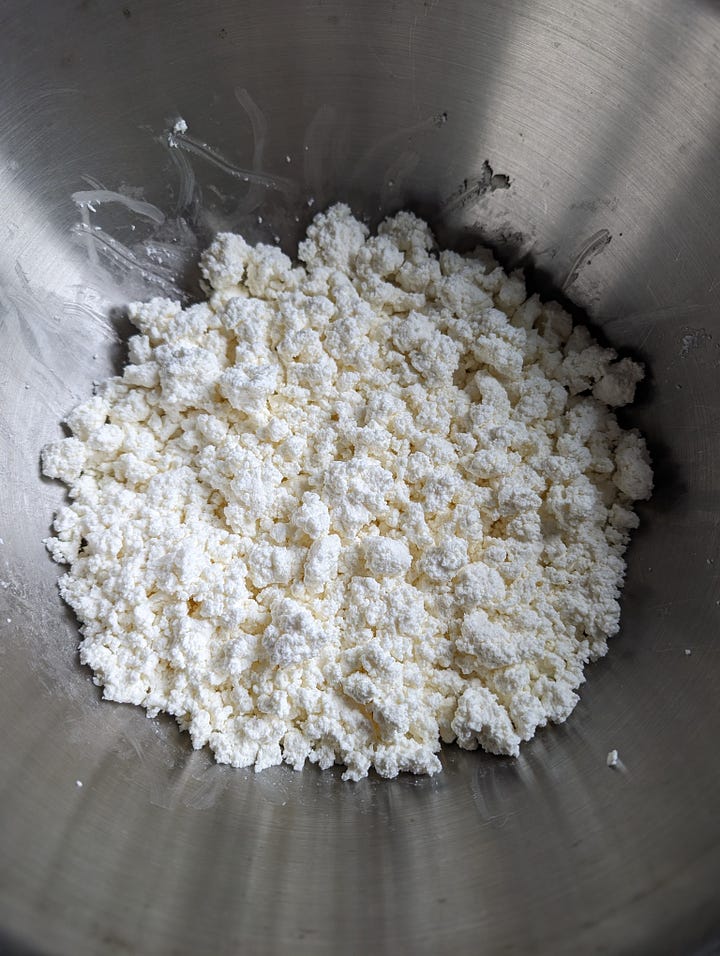
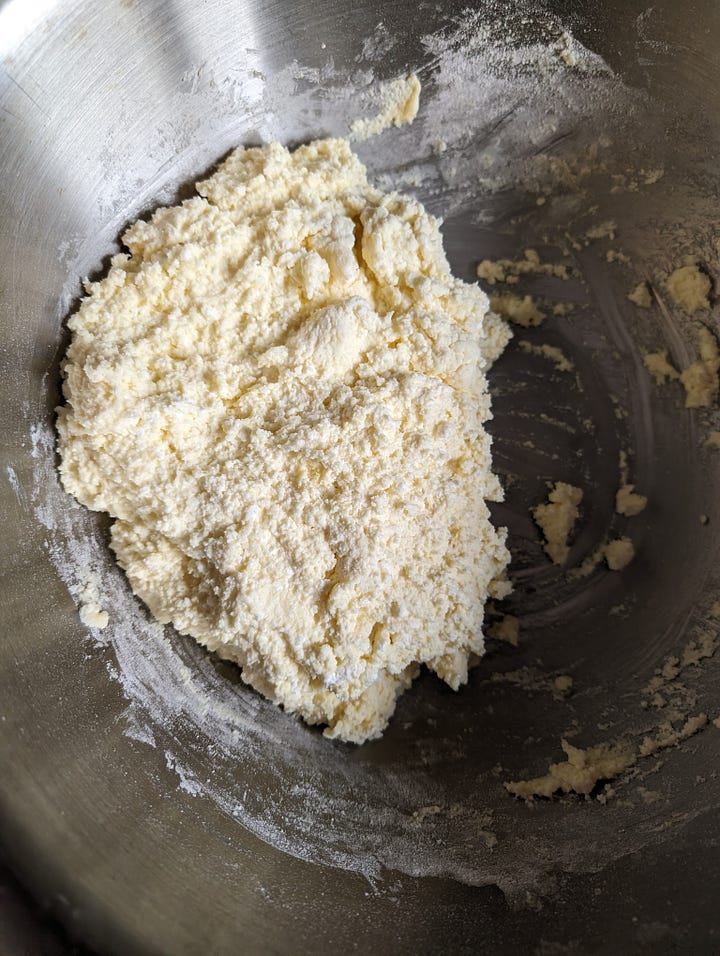
Add a pinch of salt, and two cups of rice flour. The dough is going to be very wet and very tender. I used the spatula to take the mixture on the bottom and bring it to the top, rotate the bowl a quarter turn and repeat. You just want the dough to barely be holding it together — perhaps that is easy to relate to ;)
Two cups of rice flour was enough for me. I suspect that will vary from batch to batch. I spread another half cup on the table to work the dough. Kneading is too strong of a word here. Fold, lightly press down, turn, repeat. You want it to become a relatively smooth dough. The cheese curds will prevent it from being perfectly smooth.
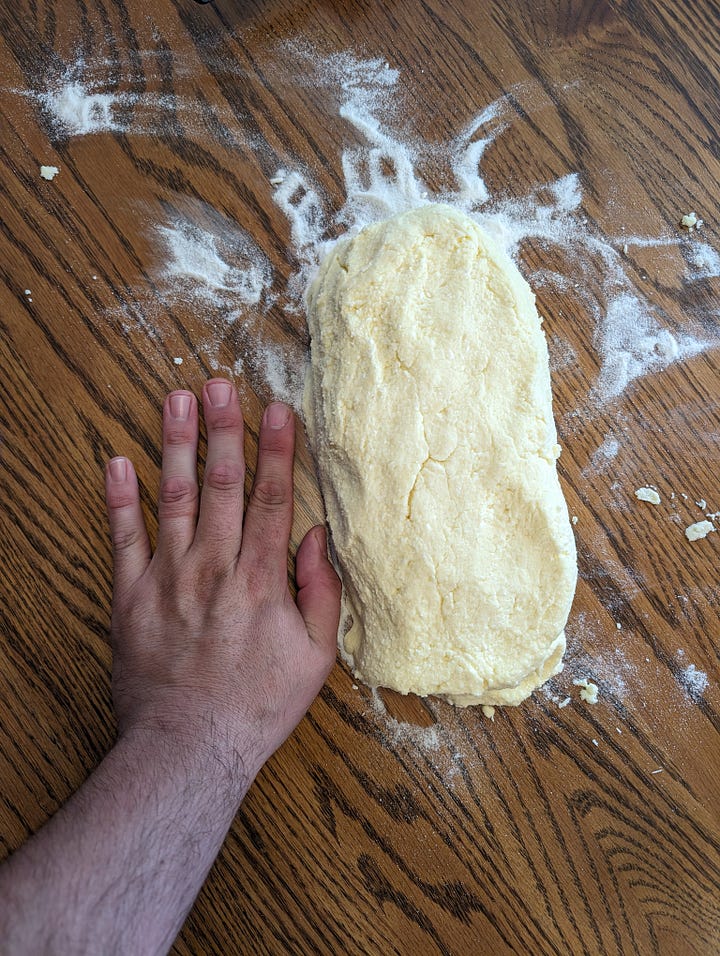

Once the dough took shape I cut it into three pieces. This makes it easier to work with. I wrapped one of the pieces to use later in the week.
With your hands, roll out a piece of dough until it is about two inches in diameter. Then cut it about every two inches on a biases. These are your dumplings. The only thing to do know is gently smoosh them with a fork creating a criss-cross pattern. Do not press them too hard, nor all the way down to the table. It might help to think of it as adding a surface for sauce to stick to rather than scoring them.
If you do them this way you will have very large slabs of pierogi, which is what I wanted. You want something more gnocchi-sized, have at it. Just be much more careful when you boil them.
To cook, have a pot of water with a bit of neutral oil in it at a low boil/simmer. I had two pots and a baking sheet with a bit of olive oil on it in the oven at two hundred degrees. Drop a few pierogi at a time into the water. Do not overcrowd otherwise they will stick. The dumplings will sink to the bottom. Stir the water, but do not hit the dumplings. You only need to go as fast as to lift the pierogi off the bottom of the pot. If you do this right, the dumplings won’t stick to the pot.
After at least five minutes, perhaps closer to eight, the pierogi will rise up and that’s how you’ll know they are done. Remove them, put them on the baking sheet and put them in the oven to stay warm while you repeat the process.
***
Now that you have all these pierogi invite some friends over. You’ll have enough to serve four. Six if there’s a big salad.
To serve, bring your arugula goop (pistou) to room temperature. On the baking sheet, spoon some goop on the pierogi and gently combine. Remember, your pierogi are just cheese, eggs, and enough rice flour to hold it together. They are not tough.
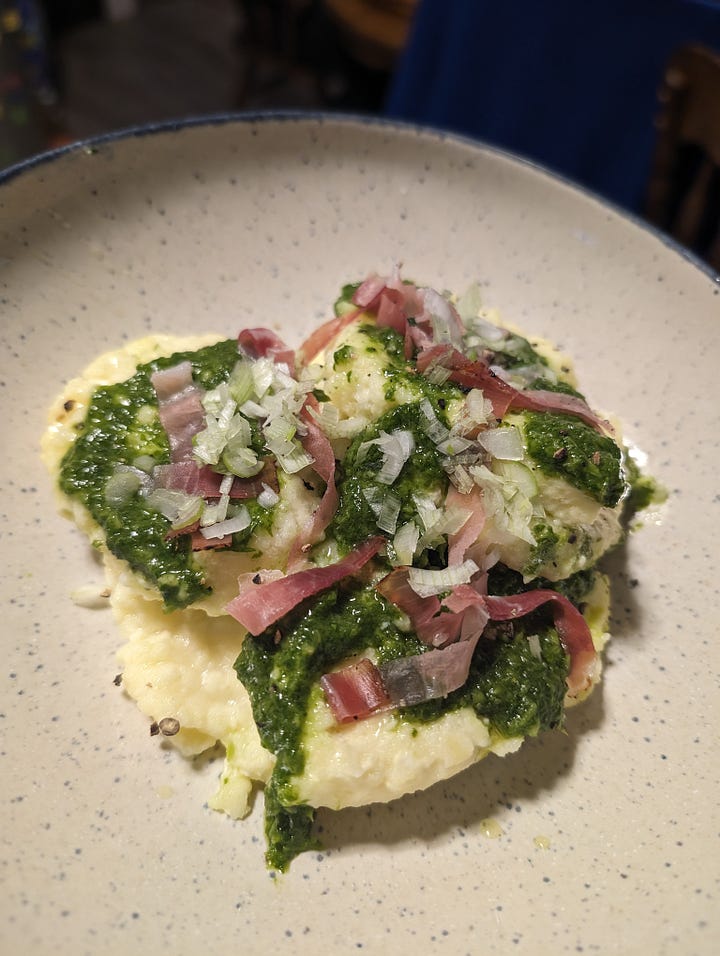
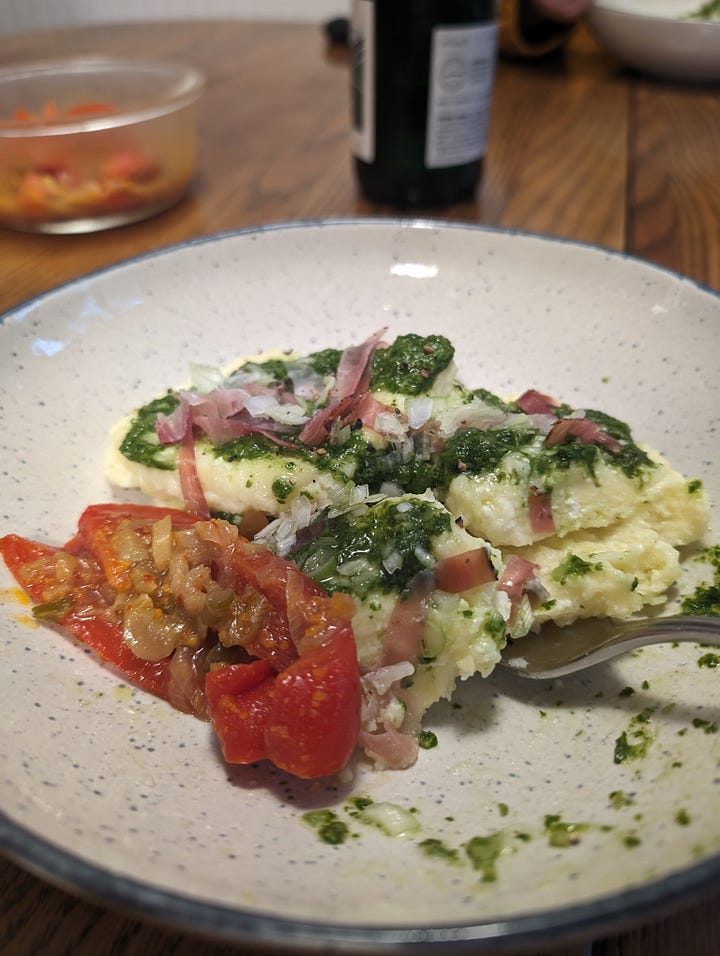
Arrange them in a pasta bowl. I garnished these with some speck and raw minced onion. Serve them along with the sweet and sour peppers from last week — it is a great vinegar foil to the rich dumplings — and you have a lovely little spring dish.
***
Like a lot of other folks this past few weeks, I have been listening to Kendrick Lamar absolutely destroy Drake. While we had this meal, or shortly thereafter, our friend John played the entire battle chronologically.
If you are familiar with the occasional poem, or even an affidavit, that’s what these tracks reminded me of. Of course, like the genre, the initial hearing is what is most important — the barbs, for example, never quite hit the same again. That said, relistening to Lamar’s side it is “meet the grahams” that as a father made me sad. It is rare to listen to something that is so loving and so cutting at the same time.
***
I hope you liked this approach of a meal that unfolds over a few posts. Not sure how often I will repeat it, but I certainly will at least one more time. Thanks for reading.

